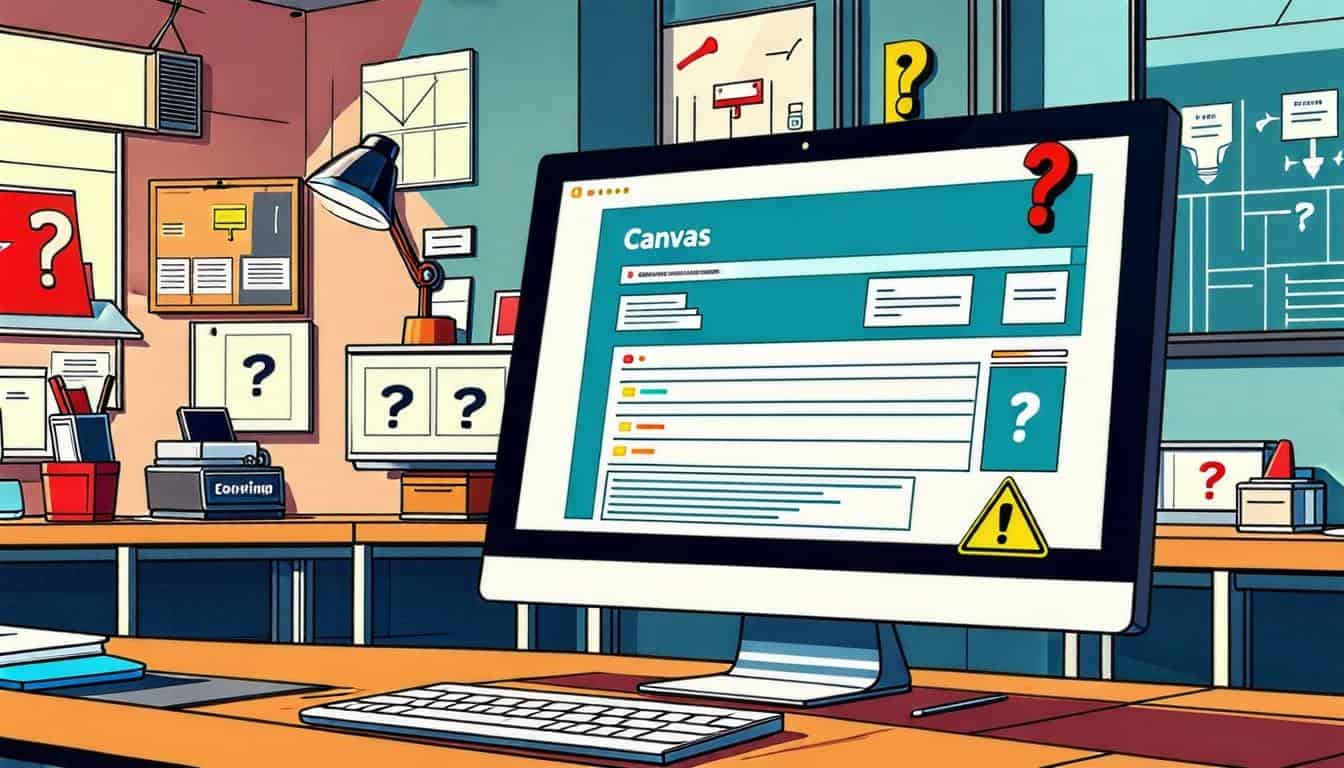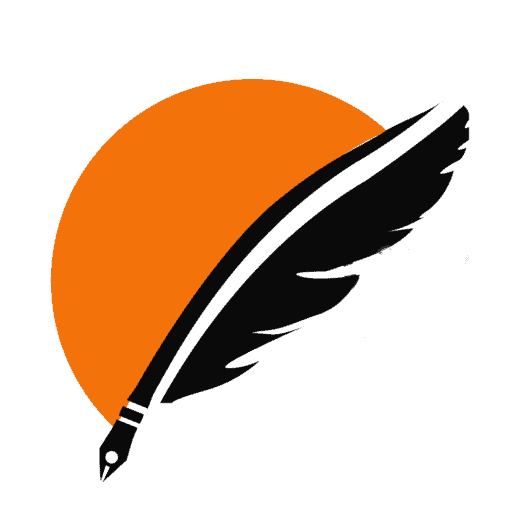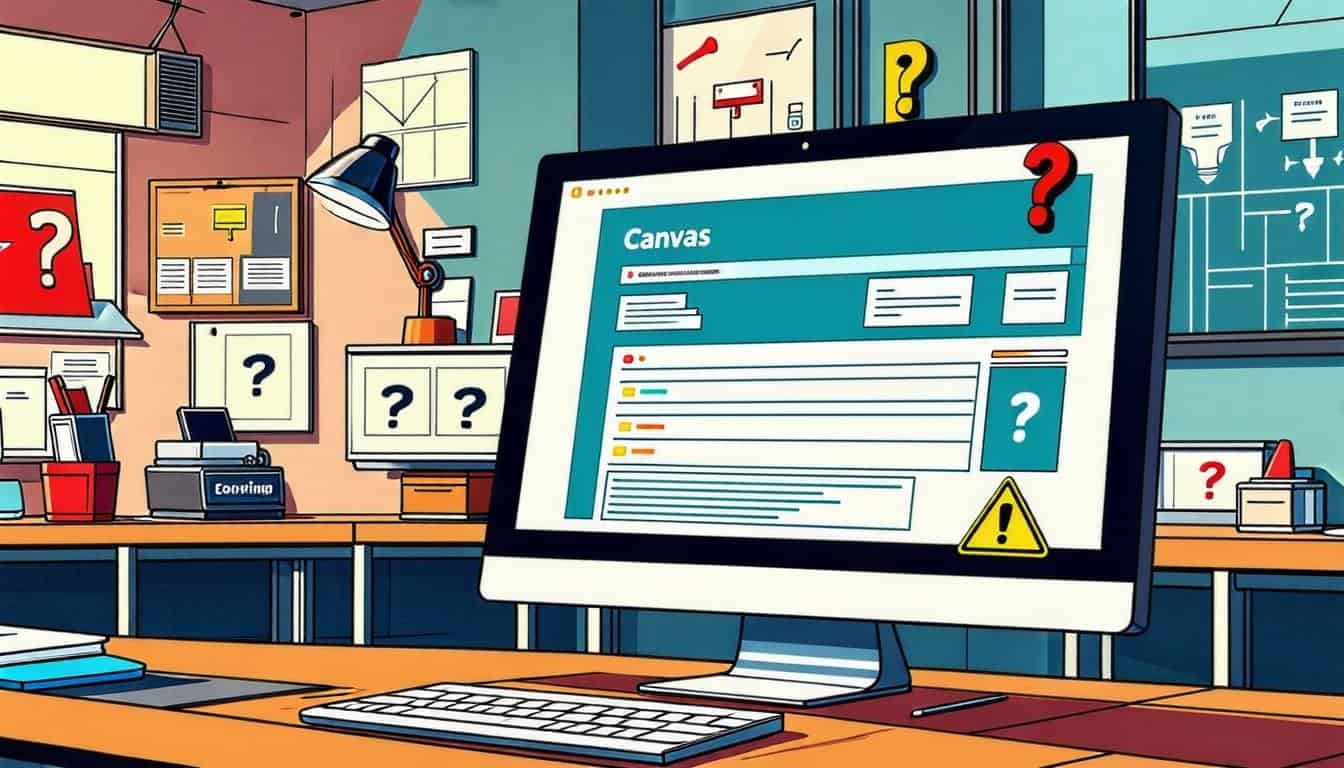Canvas is a widely used learning management system that empowers schools to streamline online quizzes and assignments. But can it really catch students copying quiz questions?
The straightforward answer is no; Canvas doesn’t directly monitor copying actions.
Yet, it offers strong tools for plagiarism detection. When students submit their answers, Canvas can use software like Unicheck to identify content lifted from other sources. This means that while copying questions might go unnoticed initially, the originality of answers is still scrutinized. Grasping these guidelines is critical for students aiming to uphold academic integrity.
Key Takeaways
- Canvas doesn’t catch copy-and-paste actions during quizzes—it’s like a watchful eye that misses the subtle sleight of hand.
- Plagiarism detection comes into play with tools like TurnItIn, which can show copied content after submission, acting as a digital detective.
- While Canvas tracks quiz logs—monitoring time spent on questions and periods of inactivity—it can’t see screen sharing or screenshots, leaving some shadows unexamined.
- Cheating tools or browser extensions slip under Canvas’s radar, operating unnoticed like whispers in a crowded room.
Understanding Canvas’s Limitations in Detecting Copying

When considering Canvas, the popular learning management system, many wonder about its ability to detect copying. Can it truly identify if a student has copied quiz questions?
The answer is no. Canvas lacks the capability to directly spot copy-and-paste actions. Think of it as a security guard who can see the doors but misses the sneaky entries through the windows—this is how Canvas operates.
Though Canvas doesn’t detect copying in real-time, it integrates with a plagiarism detection tool called Unicheck. This tool scans submitted assignments for originality. If a student pastes copied content into their answers, Unicheck flags it as potential plagiarism. But, this detection happens only after submission, not during the quiz.
What if a student messages friends during a test?
They risk being kicked off the quiz, much like a player disqualified for breaking game rules. Educators can monitor quiz logs to track student activity, but they won’t receive alerts for copy-pasting actions. The quiz log functions like a security camera, recording movements without detailing specific actions.
Here are key points about Canvas’s limitations in detecting copying:
- No direct detection: Canvas cannot identify copy-paste actions in real-time.
- Plagiarism checks: Unicheck scans submissions for originality after they are submitted.
- Quiz logs: Educators can view logs to monitor student activity during quizzes.
To uphold academic integrity, students must realize that although Canvas doesn’t catch them in the act, the consequences of plagiarism can be severe. Picture a student who believes they can cheat without repercussions, only to face a failing grade or worse later on.
While Canvas offers tools for monitoring and plagiarism detection, it is not infallible. Students should aim for originality in their work, as the risks of copying far outweigh any fleeting advantages. For more insights on how Canvas tracks student activity, check out this detailed article.
Role of Plagiarism Detection Tools Integrated with Canvas
Canvas, a leading learning management system, is pivotal in upholding academic integrity through its integration with advanced plagiarism detection tools. While some believe Canvas can directly spot copied content, the truth is more complicated. Canvas itself doesn’t flag these actions; instead, it connects with tools like Unicheck and Turnitin, which automatically scan submitted assignments for originality.
Think of Canvas as a watchful librarian overseeing a vast collection of student submissions. This librarian doesn’t prevent students from borrowing books, but upon their return, she checks for any matches with existing works. This analogy mirrors how plagiarism detection tools operate within Canvas. When students submit their assignments, these tools compare the content against an extensive database, highlighting any similarities that may suggest plagiarism.
A standout feature of these integrated tools is the plagiarism report. This report, shared with both students and instructors, reveals flagged content and offers insights for improvement. Students can use this feedback to refine their work, emphasizing the importance of originality and encouraging them to articulate their ideas in their own words.
- Plagiarism Detection: Tools like Unicheck make sure submissions are original.
- Quiz Integrity: Canvas safeguards quiz integrity by monitoring submissions.
- Feedback Loop: Students receive constructive feedback on potential plagiarism, enabling revisions.
But, students must recognize that while Canvas offers these tools, the onus of maintaining academic integrity rests on their shoulders. Just as a chef must create unique dishes, students should aim to produce original work. The repercussions of plagiarism can be severe, leading to failing grades or disciplinary measures.
Basically, while Canvas doesn’t directly detect copying and pasting, it plays a critical role in fostering academic honesty through its integration with plagiarism detection tools. By leveraging these resources, we can cultivate a culture of integrity and originality in our educational journeys.
How Canvas Monitors Student Activity During Assessments
Canvas, a leading learning management system, is equipped with advanced tools to monitor student activity during assessments. Think of it as a digital teacher, vigilantly ensuring that students remain focused and honest. How does it achieve this?
Through innovative technology.
One standout feature is its integration with Unicheck, a powerful plagiarism checker. This tool automatically scans all submitted assignments. When a student uploads a paper, they receive an instant plagiarism report, which is also sent to the instructor. This process acts as a safety net, catching potential issues before they escalate.
But can Canvas detect if a student copies a question directly?
The answer is complex. While Canvas doesn’t flag the act of copying and pasting, it evaluates content for originality. Any pasted text is still subject to Unicheck’s scrutiny. If it matches other sources without proper citation, Unicheck highlights it, allowing instructors to review the flagged content.
To bolster assessment security, educators can use several features:
- Guided Access: This feature locks the iPad to a single app, preventing students from switching to other applications during a quiz.
- Accessibility Features: These options allow students with special needs to listen to quiz questions, but educators must monitor their use to prevent misuse.
- Disable Messaging: Teachers can disable messaging features during quizzes to stop students from sharing questions.
While Canvas doesn’t send direct notifications about cheating, the generation of a plagiarism report fosters accountability. Students can access this report as often as needed, helping them understand flagged areas and make corrections if allowed by university policy.
Basically, Canvas may not explicitly identify copying actions, but it plays a critical role in upholding academic integrity through its strong monitoring tools. By understanding these functionalities, both students and educators can work together to maintain honesty in assessments.
Strategies for Maintaining Academic Integrity in Digital Assessments
Maintaining academic integrity in digital assessments is necessary in today’s online learning environment. How can we make sure our work truly reflects our abilities?
Think of academic integrity as the bedrock of a building; without it, everything else risks collapse.
A common myth about Canvas is that it detects copy-pasting. In truth, Canvas acts like a vigilant guardian, monitoring behavior rather than identifying specific actions. For instance, while it can track if a student minimizes their browser, it doesn’t directly know if content was copied. But, it does integrate with Unicheck, a strong plagiarism detection tool that scans submissions for originality.
Here are effective strategies to uphold academic integrity during digital assessments:
- Proctoring Tools: Tools like Proctorio and Respondus Monitor deter cheating by monitoring students during exams.
- Question Banks: Utilizing question banks allows educators to create unique assessments for each student, complicating answer sharing.
- Time Limits: Strict time limits can diminish the temptation to consult unauthorized resources.
- Guided Access: On devices like iPads, restricting access to a single app during quizzes prevents students from switching to other applications.
While Canvas doesn’t directly notify instructors of cheating, it offers a quiz log that tracks student activity, revealing unusual patterns that may indicate academic dishonesty. This log serves as a valuable tool for educators to investigate suspicious test results.
Recognizing Canvas’s limitations is critical. Though it can’t detect direct copy-pasting, it can flag potential plagiarism through Unicheck. If content matches other sources without proper citation, Unicheck highlights these instances, enabling instructors to review flagged submissions.
In the end, we must take responsibility for ensuring our work is original. Just as an artist must understand their canvas before crafting a masterpiece, we must deeply grasp our subjects to express our thoughts authentically. The consequences of plagiarism can be severe, leading to failing grades or disciplinary actions. Let’s commit to upholding integrity in our academic endeavors.
Impact of Browser Lockdown Features on Cheating Prevention
The impact of browser lockdown features on cheating prevention is critical in online education. How effective are these tools in preserving academic integrity?
Think of them as a digital fortress, designed to protect the sanctity of online exams.
Canvas, a leading learning management system, employs tools like the Respondus LockDown Browser to create a secure testing environment. This browser restricts access to other applications and websites during exams. Imagine trying to solve a puzzle in complete darkness; that’s the challenge of cheating when your browser is locked down.
Yet, understanding the limitations of these tools is critical. While Canvas can detect when a student minimizes the browser, it cannot directly identify if they copy and paste content. This is like a security guard who sees someone enter a room but cannot tell if they’ve smuggled anything inside. To combat this, Canvas uses integrated plagiarism detection tools like Unicheck to analyze submissions for copied content after the exam. So, although a student sneaks a peek at a question during the test, the act may go unnoticed, but the content will face scrutiny later.
Consider these key points about browser lockdown features and cheating prevention:
- LockDown Browser: Blocks access to other applications during exams.
- Plagiarism Detection: Unicheck scans submissions for copied material.
- Monitoring Limitations: Canvas cannot detect real-time copy-pasting actions.
As academic dishonesty becomes a pressing issue, we must acknowledge that while browser lockdown features bolster security, they are not infallible. Both educators and students share the duty of maintaining academic integrity. By grasping the capabilities and limitations of these tools, we can cultivate an environment where genuine learning flourishes, free from the shadow of cheating.
In the end, can we fully trust technology to uphold educational values?
As we steer these digital landscapes, staying vigilant and proactive in promoting honesty and integrity in our academic endeavors is necessary.
Educator’s Role in Monitoring and Addressing Plagiarism Issues
In today’s digital place, educators are pivotal in monitoring and tackling plagiarism issues. With platforms like Canvas, we can champion academic integrity and cultivate a culture of originality among students. But how do we effectively steer this complicated terrain?
Canvas features a powerful plagiarism checker called Unicheck, which automatically scans all submitted assignments. Think of it as a vigilant guardian, ever-watchful over student submissions. But, Canvas itself doesn’t directly catch copy-pasted content; it relies on Unicheck to flag potential plagiarism after submissions are made.
Upon submission, Unicheck generates a plagiarism report for both students and instructors, promoting transparency and allowing for swift action. But what if we find plagiarized content?
Responses vary by institution—some may permit revisions, while others enforce stricter penalties.
It’s critical to recognize Canvas’s limitations. While it offers tools to detect plagiarism, it doesn’t automatically flag actions like copying quiz questions. Instead, educators can consult a quiz log to determine if a question was typed or copied. This is like using a magnifying glass to closely examine student behavior during assessments.
To bolster our monitoring efforts, we can incorporate additional tools like Copyleaks, which analyzes text for similarities. These resources are necessary in our battle against academic dishonesty. Yet, we must also educate students on the value of originality. Understanding and expressing ideas in their own words is far more enriching than merely avoiding detection.
In the end, while Canvas and its integrated tools offer strong mechanisms for detecting plagiarism, the responsibility for upholding academic integrity rests with both educators and students. By fostering an environment that celebrates originality and ethical standards, we improve the educational experience and prepare students for future academic and professional challenges.
Summing up
Understanding how Canvas detects plagiarism is necessary for students and educators alike. While Canvas doesn’t directly identify copy-pasting, it collaborates with powerful tools like Unicheck and Turnitin to assess originality. Educators are the gatekeepers of academic integrity, actively monitoring submissions and guiding students toward honest practices. By leveraging these resources, we cultivate a culture of integrity and learning in our classrooms. In the end, upholding honesty enriches the educational experience for everyone involved.

